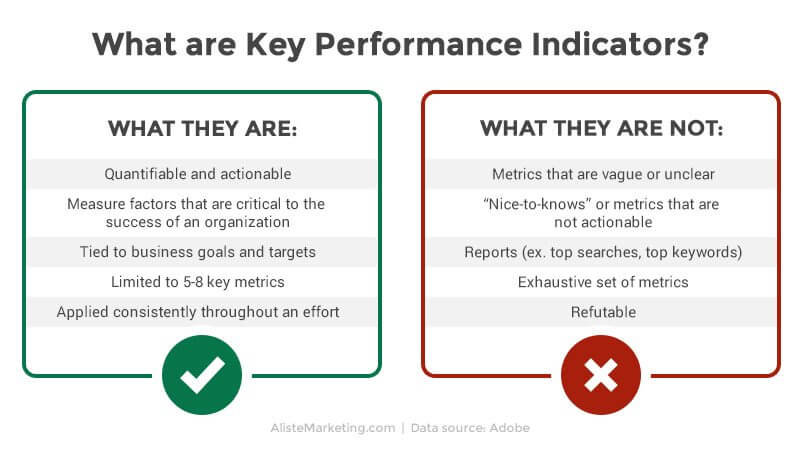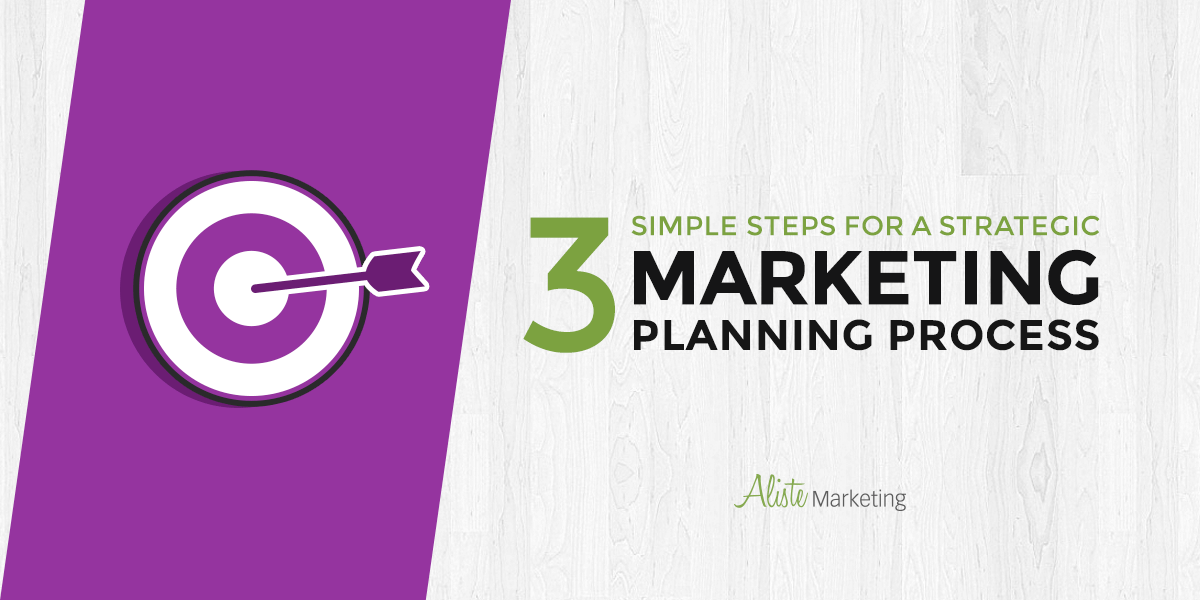Ah, spontaneity.
While it is always the way to go when it comes to a road trip, it will not serve you well when it comes to marketing.
Ask anyone who has attempted to launch a brand on the fly, and they will tell you a marketing planning process is crucial.
Understanding all steps of the strategic marketing planning process makes executing it that much easier. As you will see, these three steps require time and dedication to result in the marketing mix success.
Consider this: You want to spend at least as much time planning the launch as you spent bringing your big idea to life through the strategic marketing planning.
Planning ahead ensures you fly high instead of flop.
We’ll break down each necessary step in this article, providing you with the ultimate strategic marketing planning process to apply to any product or service.
Let’s go!
3 Strategic Marketing Planning Process Steps

Step 1: Perform Data Collection and Analysis In Your Market Research
Before you can even attempt to create marketing campaigns and materials, you need to understand who you will be marketing to.
Your target audience determines every aspect of your marketing planning messaging and approach.
Data collection and analysis can sometimes be underrated.
But trust me, it’s extremely important.
You may think it is not always necessary to go through all the steps in the marketing planning process. However, data collection and analysis is THE the number one step that starts the whole process.
The reason is, the information you gather here is the foundation for everything to come even who you target on social media.
Data Collection
Start by performing your market research on other products or services. Review the marketing mix of efforts made by companies similar to yours.
Consider using a spreadsheet to easily compare your findings.


Look at things like:
Market Audience
- What kinds of buyer personas are they attracting?
- Can you determine demographics such as age, gender and location, if applicable?
- What things do people mention most in Google or Facebook reviews?
- What seem to be their interests?
Marketing Messaging
- Is the “brand voice” professional, casual, educational, conversational, or a mix?
- What about their messaging makes them seem trustworthy and approachable?
- What about their messaging could be viewed as off putting? Note positives and negatives so you know what works and what doesn’t.
Marketing Communication Frequency
- How often are they marketing to their target audience? For example, if they have social media, how frequently do they post?
- If they place social media ads or utilize ads on TV, Radio or in the paper, try to determine the extent of their efforts.
- Do they do any in-person marketing mix of networking, trade shows, or event sponsorships? How often?
Placements
Determine how others reach their audiences most effectively. Where are they spreading the marketing message?
From here, the next step in a marketing planning process is to conduct focus groups through market research. Maybe your company is on the smaller side, so focus groups are more difficult to implement.
Not a problem! You can hold informal sessions with friends, neighbors, and people around your community to glean crucial information for your market research.
For companies ready to dive right in, the type and number of focus groups you will conduct will vary based on your product or service.
Let’s use a private golf community as an example.
To determine the brand for this new community, the following groups should be interviewed:
- Realtors in the Area
- Golfers
- Nearby Business Owners
- Locals Who Live in the Surrounding Communities with Similar Amenities
Each group would be given a tour of the new development, then asked the following questions:
- What’s your general impression of the community?
- What things really stand out in a positive light?
- What would you change?
- How might living here enhance your life?
- Would you consider living here?
- Would you recommend it to a friend?
Now that you have completed the market research data collection phase of your strategic marketing plan process, you are ready to move into the analysis phase.
[clickToTweet tweet=”Your target audience determines every aspect of your #marketing messaging & approach. #smallbiz” quote=”Your target audience determines every aspect of your marketing messaging and approach.”]
Data Analysis
The information you gathered is essentially your GPS, pointing you in the direction of marketing planning success.


To gain a thorough understanding of the competitive marketplace, identify the trends among the businesses you found in your market research.
Where is there overlap?
This step in your marketing planning process shines a light on the practices you want to emulate.
Of course, no one likes a copycat. Once you’ve identified the most common successful marketing strategy, put your own spin on them.
The focus groups will most certainly open your eyes to some new ideas. As someone with a vested interest in your product or service, you can often be “too close” to see the big picture and need to rely on a third party to identify the marketing opportunities.
Whether you conducted two or ten, the focus groups should help you effectively accomplish the following:
- What are the 5 promotional strategies that would work for your audience?
- Define the unique value your product/service brings to the marketplace.
- Identify your primary and secondary target markets.
- Understand the areas for improvement.
Make an effort to determine three words that exemplify your brand.
1. ___________________
2. ___________________
3. ___________________
These will be words that came up time and time again in your market research focus groups. They should evoke a feeling and an ability to envision your product or service in use.
For the private golf community, the three words might be “warmth, balance and camaraderie”.
These words become the cornerstones of your brand. Once you have them, you have officially uncovered your Brand DNA.
SEE ALSO: 5 Marketing Lessons Learned from the Red Starbucks Cup Controversy


Step 2: Determine Strategic Marketing Planning Budget and Allocation
Marketing Budget
Now that you completed the foundation for your brand, it is time to dig into the execution details. The budget and allocation step of the marketing planning process is a big one.
Your market mix budget covers the costs for:
- marketing,
- advertising,
- public relations
- and digital efforts including social media.
Even if you have no “real” marketing budget, the time you spend utilizing free marketing avenues still costs something. It is time you are taking away from enhancing your products or providing your services.
The fact is, getting your message out there takes a budget. The saying, “You have to spend money to make money” is popular for a reason!
The general rule of thumb is this: your strategic marketing budget should equal at least 5% of your revenue.
If that number feels high, consider this survey on strategic marketing spending from McKinsey, the American Marketing Association and Duke University that says the industry average is 8.3%.
Marketing Budget Allocation
Once you have a budget on paper, the fun begins. There are seemingly endless ways to spend your time and money:
- TV
- Radio
- Public Relations
- Search Engine Marketing
- Social Media Marketing
- Local Outreach (Events)
- Inbound Marketing
Figuring out where to put your money will hinge on your KPIs (Key Performance Indicators).


What are key performance indicators?
- Quantifiable and actionable
- Measure factors that are critical to the success of an organization
- Tied to business goals and targets
- Limited to 5-8 key metrics
- Applied consistently throughout an effort
Some specific, common KPIs are:
- Grow revenue by X percent in X months.
- Increase web traffic X percent each month.
- Generate leads from X to X in X months.
It is crucial that your KPIs include measurable goals.
I’ll tell you why.
Simply saying “increase revenue” will not help you allocate a budget for your marketing planning process.
With KPIs, you are trying to identify the success factors most important to generating business.
Distinct KPIs will help you determine the marketing avenues that make the most sense for your business.
Examples of Key Performance Indicators
Let’s say the private golf community had a budget of $100,000.
Approximately half of the budget is spent on a full-time Marketing Manager.
The manager’s KPIs are:
- Sell at least 90% of fair market share in first 12 months.
- Increase leads by 25 month over month.
- Build non-resident golf memberships to 100 in 12 months.
The community’s target market includes a variety of incomes and ages, meaning they could benefit from every form of marketing.
(Note that in some cases, your target market might eliminate certain areas for you. If you’re selling items to people over age 75, your end customer may not be in the digital marketing/ social media arena but the families of those 75 year olds are using inbound channels to communicate. In this case, the messaging would be different on each platform you are marketing.)
After extensive research, the community determined that competitors are earning the bulk of their business from realtor referrals, online searches, social media and in some cases, at events like Community Trade Shows.
With this information, allocation of the budget for your strategic marketing planning process becomes easy!
Here is an example of how this information can further clarify the KPIs:
- Sell at least 90% of fair market share in first 12 months via realtor education including but not limited to on-site events, realtor office events, closing incentives and partnership opportunities.
- Increase non-realtor leads by 25 month-over-month via content marketing on the blog, social media, and PR.
- Build non-resident golf memberships to 100 in 12 months via digital advertising on golf websites.
Now you’re starting to see how a marketing planning process can help your brand succeed.
[clickToTweet tweet=”Figuring out where to put your marketing budget will hinge on your KPIs #marketing101 #smallbiz” quote=”Figuring out where to put your marketing budget will hinge on your KPIs (Key Performance Indicators).”]
Investing the time up front ensures that nothing falls through the cracks. It also helps you from creating assets that might:
- Be off brand
- Need lots of revisions
- Or worse, go unused
Speaking of that, let’s get to the final step of the strategic marketing planning process: creating the marketing assets.


Step 3: Create the Strategic Marketing Assets
While some might consider creation something that happens after a plan, the marketing planning process includes everything prior to execution.
What does this mean?
It’s simple: you need to create your marketing materials so you are fully prepared to execute a campaign.
Let’s walk through the assets you need for every major marketing mix avenue:
- Television and radio
- Print advertising
- Public relations
- Search engine and social media marketing
- Local outreach (events)
- Inbound marketing
Television and Radio
The fact that TV ads no longer require companies to run them nationwide is huge. It opened up this medium for many small and medium sized companies.
Like TV, radio has become increasingly more affordable over the years.
TV and radio advertising options include:
- National
- Regional
- Local
- Cable (TV) / Satellite (Radio)
Creating a great ad comes down to a few key things.
- Make sure your brand is conveyed clearly and creatively.
- Tell a story but remember to keep it simple!
- Utilize something consistently to build recognition whether it’s a logo, brand representative or jingle.
- Finally, make sure you don’t cut corners.
Quality is everything!
Once your commercial(s) are edited and ready for the world, you’re ready to execute a marketing plan utilizing these assets.
Print Advertising
Print ads can be found in a wide variety of publications. From the local newspaper to a nationally circulated magazine, the options are nearly endless.
An eye-catching print ad requires a series of coordinating design elements:
- A great logo
- An inviting color scheme
- Good use of space
- Easy-to-read fonts
- On-brand graphics or photos that are print-friendly
- Relatable content
- A call-to-action
Because the success of print is difficult to measure, creating strategic marketing assets that include clear CTAs and offers is the best way to go.
This will allow you to easily count the number of redemptions and compare it against the cost to place the ad.
Of course there are benefits to print advertising that cannot be measured by direct ROI, like consistent branding and awareness.


This only further solidifies the need for strong print assets. Looking for some more inspiration? Check out these genius print ads.
Once your designer completes the ad(s) in the right specs, you’re ready to execute a marketing campaign!
Remember that aside from ads, there are lots of other printed marketing assets your company may need for marketing like:
- brochures
- business cards
- signage
- and more
Public Relations
A PR professional will rely on your business to provide them with a series of assets they can use to spread the word.
These things include:
- brochures
- press releases
- a current website
- upcoming event or product information
- educational videos
- and more
The assets your PR company needs to excel have likely already been created by the time you are ready to onboard their services.
Be sure to have them provide you with a list of desired assets before hiring them so you can determine the added cost of creating any new assets they may need.
Search Engine and Social Media Marketing
Depending on the online platforms you intend to utilize, you will need to create a variety of digital assets before launching a campaign.
For example, if you intend to launch a search engine marketing campaign, you will need the following:
- Ad copy focused around a relevant keyword
- At least one image or graphic (we recommend using two or more to help determine what your audience likes; this is called A/B testing).
As another example, if you plan to start a new Facebook Page for social media marketing, you need to prepare the following:
- A cover photo
- A profile image
- A short description of your business
- A series of pre-planned posts including copy and accompanying graphics or images (we suggest planning a month ahead!)


In addition, if you plan to advertise on Facebook, you’ll need to develop:
- Ad copy
- At least one image or graphic (two are recommended, the same as noted above)
Local Outreach (Events)
The assets you needs to advertise at local events will vary based on the event, but in general you can create certain items that will serve you in multiple scenarios:
- Banners
- Pop-Up Signs
- Flyers
- Brochures
- Branded Swag
Before partnering with any events, ask for the build-out requirements so you can determine the added cost of creating any new assets they may need.
Inbound Marketing
Building a loyal following of advocates that want to share and converse with your brand all starts with creating a story they can connect with.
- Valuable Content Offers
- Converting Landing Pages
- Strong Call To Actions
- Consistent Activity on Social Platforms
- Utilizing SEO in all content (blogs, white papers, posts)
Creating an effective inbound marketing strategy within your marketing planning process will attract target leads that have a common interest in your brand. Through effective content you are able to pull leads into your pipeline rather than constantly pushing a message out.
SEE ALSO: The Ultimate Guide to Using Snapchat for Business in 2017
[clickToTweet tweet=”#Marketing planning process is everything prior to execution, including producing creative assets.” quote=”The marketing planning process is everything prior to execution, including producing creative assets.”]
Conclusion
Putting together your strategic marketing planning process includes these steps:
- Perform data collection and analysis through market research
- Determine marketing budget and allocation for your marketing mix
- Create marketing assets that support your planning process
And while most people would rather dive right into the exciting stuff, we guarantee investing time in this marketing process will help you confidently execute successful campaigns.
You can use the guidelines from each of these steps to create a marketing planning process that works specifically for your business!
What do you feel is one of the most important steps of the strategic marketing planning process?
Share with us in the comments below!
If you liked this article, please share it!





